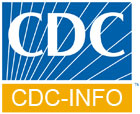Skip directly to the search box, site navigation, or content.
Division of Foodborne, Bacterial and Mycotic Diseases (DFBMD)
Botulism
Clinical Features
A neuroparalytic illness characterized by symmetric, descending flaccid paralysis of motor and autonomic nerves, always beginning with the cranial nerves. Symptoms include double vision, blurred vision, drooping eyelids, slurred speech, difficulty swallowing, dry mouth, and muscle weakness. If untreated, illness might progress to cause descending paralysis of respiratory muscles, arms and legs. Equine botulinum antitoxin (supplied by CDC through state health departments) can prevent progression of illness and shorten symptoms in foodborne and wound botulism cases if administered early. Infant botulism can be treated with human-derived antitoxin (Baby-BIG) available from the California State Health Department
Etiologic Agent
A potent neurotoxin produced from Clostridium botulinum, an anaerobic, spore-forming bacterium.
Incidence
In 2006, 171 cases of botulism were reported to the CDC. Of these, 19 were foodborne, 107 were infant botulism, and 45 were cases of wound botulism.
Sequelae
Death can result from respiratory failure. About 5% die. Recovery takes months. Those who survive may have fatigue and shortness of breath for years.
Transmission
Foodborne botulism follows ingestion of toxin produced in food by C. botulinum. The most frequent source is home-canned foods, prepared in an unsafe manner. Wound botulism occurs when C. botulinum spores germinate within wounds. Infant botulism occurs when C. botulinum spores germinate and produce toxin in the gastrointestinal tract of infants.
Risk Groups
All persons. Injection drug users are at increased risk for wound botulism.
Surveillance
In collaboration with state health departments, CDC maintains intensive surveillance for botulism in the United States. Every case of foodborne botulism is treated as a public health emergency because the responsible food, whether homemade or commercial, might still be available for consumption and could make unsuspecting persons ill.
Trends
Vehicles of transmission have included homemade salsa, baked potatoes cooked in aluminum foil, cheese sauce, garlic in oil, and traditionally prepared salted or fermented fish in Alaska. Wound botulism related to the use of black-tar heroin has increased, especially in California.
Challenges
Prompt recognition of clinical syndrome by physicians. Preparation for a possible attack on the United States with botulinum toxin.
Opportunities
Clinician education. Consumer education about home canning. Educating Alaska natives about proper fermentation techniques. Applying tools of molecular biology.
Content Source: National Center for Zoonotic, Vector-Borne, and Enteric Diseases (ZVED)
Program Contents
Contact Information

